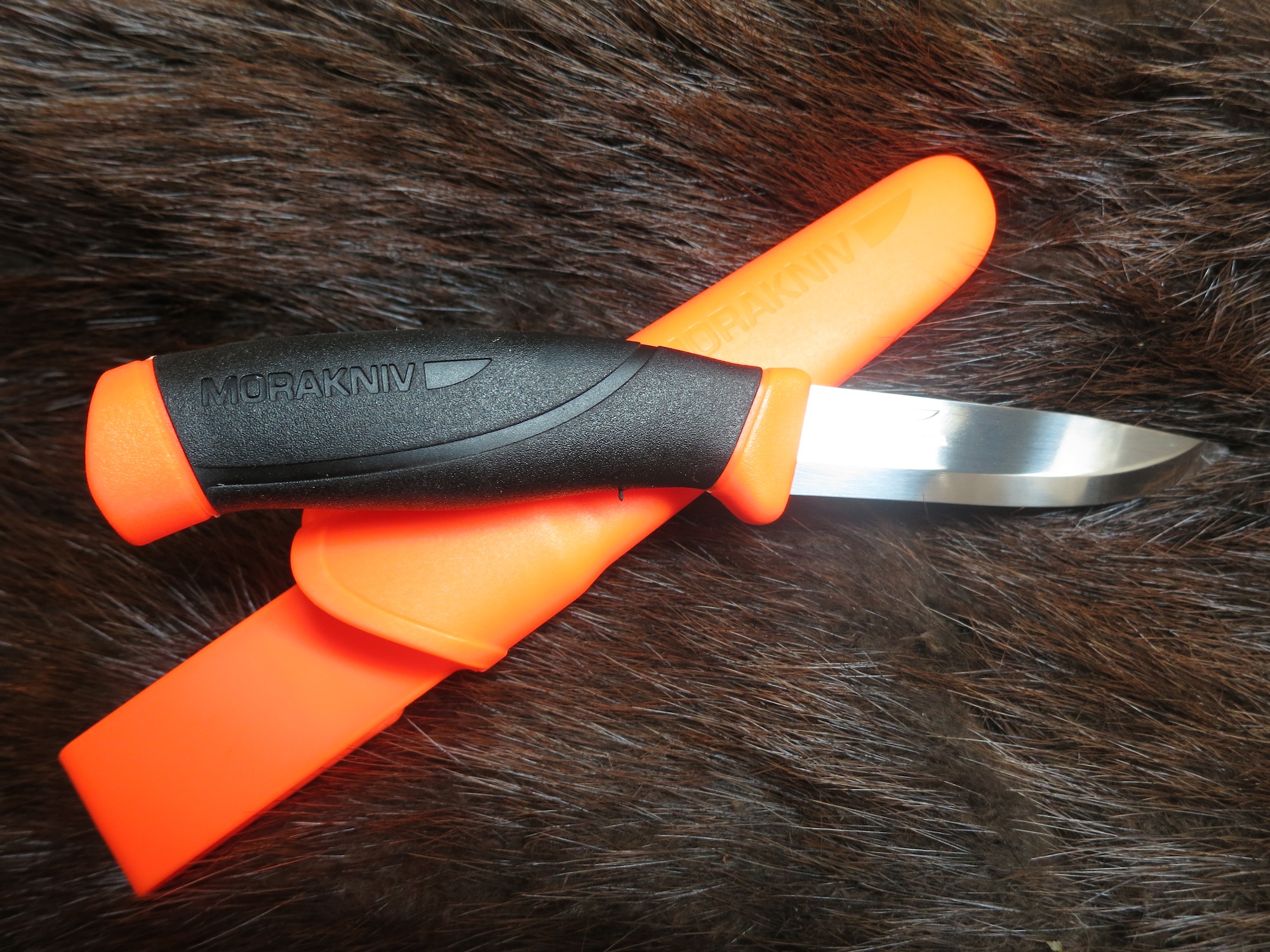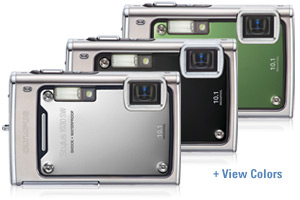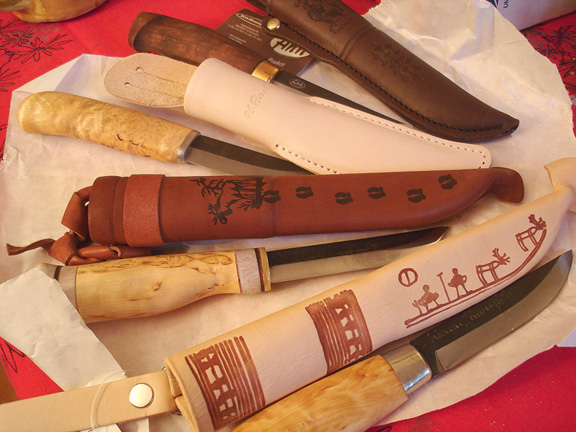Sharpness and edges…
I’m selling knives! I’m emphasizing a cool type of knife that is seldom-seen in the US: the Scandinavian puukko. See my listings in my OutYourBackdoor eBay Store!
www.ebay.com/sch/outyourbackdoor/m.html…
I think it’s funny that knives are advertised as being sharp. Even sensible, high-end makers will mention sharpness. Reviewers talk about “sharp out of the box.” That’s all nice, and I have noticed differences in finish, but it has nothing to do with reality. You use a knife a few times and that all changes. It’s like praising a new car because it’s clean. Or praising a tire because it was inflated.
This article was going to be short. Just a one paragraph joke about “sharp out of box.” Then I had to get carried away. First, I realized that I hadn’t even posted about my new line of knives. Then I realized that sharpness is a whole world in itself. And then that knives aren’t just one thing. Whew! …It got long.
A knife that’s used is constantly being resharpened. The interval may vary but sharpening is part of the life of a knife.
Similarly, if you have a fixed-blade knife then the sheath is as important as the knife itself. (And one of my cheapest knives has the coolest sheath! The Mora Companion. $20. Rockin’ sheath! Check out the store and you’ll see.)
But for all knives, your sharpening method and sharpening tools and sharpening skill is as important as your knives.
So… your whetstone is actually REALLY important. Japanese stones can be way cool. Then there are the tools, rigs, brackets and systems: I’m sure they work, too. I personally use a 2-sided, 2-grit made-stone. Such stones from time to time also need to be “sharpened”! It’s called dressing. You want your stone to be flat. You put emery cloth onto a pane of glass then run your stone circularly over it until it’s flat. Yeah, you can start with a coarse grit.
Hmm, the stone rules the knives, actually.
I should also sell stones. Coz, c’mon. But doesn’t everyone already have one they like? Hmmm… Probably not a sweet quarried Japanese stone, though. Didya know there’s a martial art, and even kind of a religion of whetstoning? Sharpening a samurai sword is a BIG deal. There is lots of terminology. There is a posture, a way to sit. I suppose it’s due to the length of the edge and the huge secondary edge with no handy primary bevel to gauge by. And there isn’t just a secondary. There’s an art to that, too. Amazing, really. Beautiful. …But we can get a taste of that just by using a natural Japanese stone.
Anyway, to me sharpness out of the box is irrelevant, but the KIND of edge a knife has IS of interest. Knives come with a medium edge. No worry. They’ll have a main grind of some kind — the general slope of the blade leading to the edge — then a secondary edge which is what does the cutting. This final edge may be wide or narrow. Take a look: it’s what you’ll have to “ride” your whetstone on.
A neat thing about some of the Scandi blades I’ve been getting in is that some have basically no secondary edge. The main bevel or “face” of the blade IS the edge. It’s like the edge has been enlarged to 3/4″. This can be handy. You just lay each side on your stone and sharpen: done. Sharp. This whole bevel will become burnished from sharpening. So if it arrives mirror-like and there’s no secondary edge understand that with use the mirror will depart. …Unless you also polish.
If a blade has a small secondary then you learn to just lift the bevel off the stone “a little bit” for your sharpening. If the secondary is quite wide realize that such a surface is still short and small: you’ll have to learn to “float” the main bevel off the stone and control it more: there will be a greater chance of “slop” for you to roll your edge one way or another as you sharpen. …Though in most cases this won’t matter anyway: you’ll just have some waviness in your edge even though it might be entirely good enough for your needs.
A 1/2″ secondary is easy to control: slap it onto the stone and away you go. A 1/64″ secondary is easy, too: just lift the main bevel a “scoosh” off of the stone. …A 1/4″ secondary easily ends up being wavy.
Now, “good enough” isn’t a slur. It’s the main principle of engineering! Even of art. Fit the finish to the use. It’s wrong to put a surgical polish on a blade that you’ll be chopping a bucket of carrots with.
Also, different kinds of use need different kinds of sharp. Supersharp, with a polished edge, is a specialty use unrelated to pocket knives. I enjoy making a polished edge but it’s just for grins: the polish is gone in a couple days. If you actually needed a polished edge and were working with it you’d apply such an edge before each task and probably again during each session. Polishing is an extra aspect of sharpening. Regular sharpening for all usual uses doesn’t need it.
Edge-holding also seems irrelevant. I haven’t seen a good knife that doesn’t work because of a problem there. Sure, a $5 cheapy might have such soft steel that edge-holding is comic. But even great knives, if used hard for an hour, will need a touch-up. See any kitchen.
Carbon is famous for being easy to sharpen. Just watch it’s not overly soft. Stainless is famous for being ‘bouncy’ — hard. I find it to be no problem, either. Hardness is a rating: once they get over 60 brittleness is a factor. HRC ratings vary usually from 50-70. Utility blades go from 52-60. 52-55 is fine and common. Over 60 involves issues of brittleness and care. A brittle edge lasts a long time and is very hard. But if you bump it into a rock or bone or even something frozen it’ll chip. Ouch! To sharpen away a chip can take an hour. It costs you metal, years off the life of your knife. Don’t chip. Laminated blades are cool but emphasize a brittle/hard edge. Just handle them gently. Japanese fish knives can be like this: avoid the bones! Never try to work with a frozen fish!
Steel type is another whole big deal. I have no knowledge or opinion on this! There are maybe 6 common types. Maybe 12 you might run into. I haven’t seen one that’s either a miracle or a problem.
You can change edges as you change what you’re doing with a knife. Doing this back’n’forth very often will shorten the life of the knife but a knife is a consumable. If you need fine slicing then a shallow edge is best — as with cutting soft meat. If you’re doing coarse work and need toughness — as when cutting hard wood through dirty bark or whenever dirt is involved — then a steep edge is best. So a knife doesn’t actually “have” an edge. You *give* it whatever edge you like. Note that a shallow edge is easily bent so you’ll likely have to steel it to realign the edge. And a steep edge easily skips or hops so you have to guide it firmly and might find it more useful on a heavy blade or tool that has momentum when used.
Like with a double-bitted ax: one edge has a wide secondary, a fine edge, even a thinner blade: for chopping deeply into fresh wood. It’s the main, hardest work. The full edge is used. You’ll need to resharpen every hour of such use, for sure. Touch up more often. The other bit will have a steep edge, for swinging near the dirt, maybe sometimes in the dirt, as you walk along and limb the tree once it’s fallen. …But watch the angle to the limb! You don’t want it to skip. You still want good bite, of course. These edges only vary 10 degrees or so. Skipping is actually the source of huge danger in limbing! Yet there is enough junk encountered that a feather edge just isn’t right. It’ll last for only 3 branches. Silly. So steepen-up your limbing edge. But don’t get carried away: a truly steep edge you’ll save for your splitting wedge!



